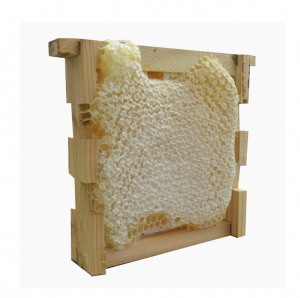The day of extracting honey as a backyard beekeeper is due for a major change.
Honey in bottles, can you really tell if it is clean? What can’t you see?
 |
| Bottled Honey |
Some beekeepers take their boxes (or honey supers) to companies that extract for them, but end up potentially exposing their equipment to a variety of diseases from other equipment jointly processed.
Eco Bee Box Comb box frames are easy to extract or can be sold capped as is. Quality control is maintained by the bees. Today, consumers need to know if honey they purchase is indeed all honey and is free of foreign items. Foreign items can include bee guts and parts, larvae juice, water, sugar syrup, and glucose, to name a few. Other issues may include unsterilized equipment and poor beekeeper practices. If profits are the goal, the money wasted on extraction becomes obvious. Money for bottles, space, risks, and challenges of crystallization, mess, and the fact you have now taken a quality bee controlled item and have now produced a secondary product with higher costs, risks, and the possibility of foreign items.
To restate the process for extracting from mini comb frames. Cut comb out with a clean butter knife. Place into a baggy and seal. Squish like a bean-bag and let settle. Wax will float. Pop holes and squeeze out settled honey. The consumer now has natural wax as a bonus AND has a 100% natural honey.
Let the consumer do the extraction and avoid the mess and problems. The comb can even be sold in baggies. The consumer can store it frozen, verses in bottles, to prevent eventual crystallization.
For the beekeeper, another trick for adding value is dating the frames and including the beehive’s general location so consumers can identify pollens in relation to their allergies. If spring pollen is the issue, fall honey perhaps has less benefit.
A frame dated April 15th when placed – June 2nd when removed, shows the consumer a vital bit of information. Location is further beneficial information for the consumer.
Quality honey is also based on the wax comb that holds it. True, the bees disinfect, clean and reuse drawn wax, but the newer the comb the better. If the bees reuse comb and cap some of the cells as being “no good”, we beekeepers ignore it – uncap and spin, then replace the comb for the colony to repair.
 |
| Eco Bee Box – Comb Super / Box 100% Natural |
 |
| Eco Bee Box – Comb Frame / no foundation |



